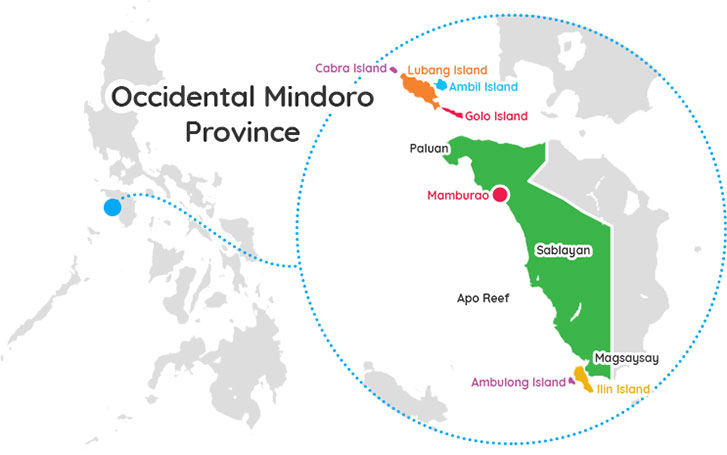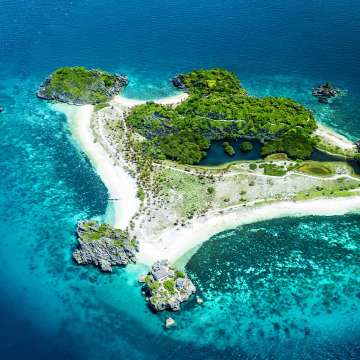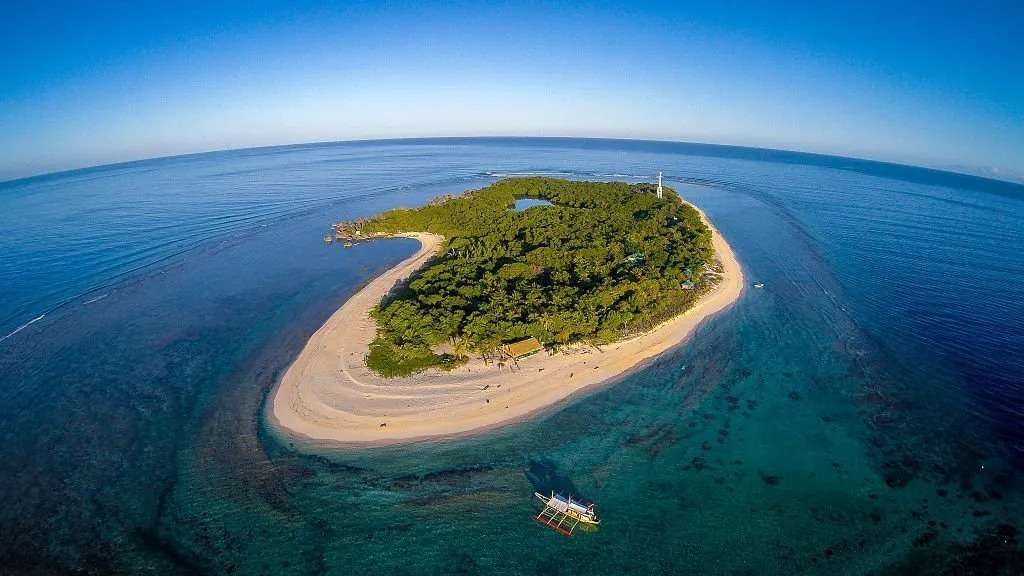About occidental mindoro

Occidental Mindoro, officially the Province of Occidental Mindoro, is a province in the Philippines located in the Mimaropa region. The province occupies the western half of the island of Mindoro. Its capital is Mamburao, but the largest municipality is San Jose.
The province is bordered on the east by the province of Oriental Mindoro, and on the south by the Mindoro Strait. The South China Sea is to the west of the province and Palawan is located to the southwest, across the Mindoro Strait. Batangas is to the north, separated by the Verde Island Passage, a protected marine area and the center of the center of the world's marine biodiversity.
History
Mindoro Island was originally known to the ancients as Ma-i. It was formally called Mait, and known to the Chinese traders before the coming of the Spanish. Its existence was mentioned in the old Chinese chronicles in 775 A.D. and more elaborately in 1225. It was a major anchorage in the Southeast Asia trade route during the pre-Philippines period. Chinese, Arab and Indian merchants traded with the natives.
In 1570, the Spanish began to explore the island and named it Mina de Oro ("mine of gold") after finding some of the precious metal, though no major gold discoveries were ever made.
The natives of Mindoro were called Manguianes by the Spaniards. But the natives refer to themselves by their ethnic or clan identification. There were seven such ethnic or clan distinctions, which are differentiated by language and areas where each can be found.
The Mangyans, as they are now anthropologically known, do not have a warrior society. They are a peaceful, shy but friendly people. They are rarely known to be hostile, and have had no significant record of violent conflict with other people in the entire history of the province. They grow root crops in forest clearings (slash and burn farms), and hunt wild animals in the forest for their meat needs.
There are no authentic documents in existence explaining the original stock of the Mangyan people, but later theoreticians postulate that they migrated from Indonesia before 775 A.D. They hopped from island to island, until finally settling down permanently in Mindoro. It appeared that clan settlements existed in the North as well as in the southern ends of the island. By 779, the southwest coast of the island was already a known trading center, and its fine natural harbor frequented by Arab, Indian and Chinese maritime traders who plied the route. But there was no attempt of subjugation, just trading.
The first semblance of a political system in Mindoro's experience was provided by China in the 13th century. Chinese imperial forces under Admiral Cheng Ho with a powerful armada of 60 war junks visited Mindoro and other parts of the archipelago in the 13th century, with the purpose of gaining more trading favors for Chinese merchants.
For a time, Admiral Ho tried to exert some effort of rule as a prelude to Sino annexation. Internal trouble in the Chinese home front, however, recalled the armada, and the attempts of the empire to annex the archipelago did not materialize.
Some time after the Ho overture, Islamic influence reached the island, probably, through Suluanons who traded with the natives. Moslem peoples, possibly - Orang Dampuans (economic refugees from Sulu) crossed Mindoro Strait from Paragua (now Palawan) and settled along the coastal areas, developing progressive maritime communities.
In 1572, Captain Juan de Salcedo of the Spanish expeditionary army set sail from Cebu and explored the west coast of the island, encountering the Mangyans, who appeared used to seeing foreigners and were not at all a bit surprised at their arrival. On the contrary, it was Salcedo and Martin de Goiti who were surprised to see cross designs on the clothing and basketwork of the natives, and thought some early Christian missionary had been there before them. But later scholars believed the design was Indic in origin and had no religious meaning.
The Spaniards also encountered Moro settlers in Lubang Island that were vassals of and paid tribute to the kingdom of Maynila in the North, under Rajah Sulayman. This was the first real political system in the island. The Moros, who apparently had heard of the invaders from their kinsmen in the south, engaged the small Spanish force who landed on their shore, but the Spaniards' arquebuses and cannon fire from the ships hoved-to broadside to the island took the field. The Moros fled to the hills, and Salcedo burned their village.
After the defeat of Sulaiman in the same year, Mindoro and other vassal states of Maynila became subject of Castillan rule. The island was officially referred to from then on as Mina de Oro (Mine of Gold), compressed later on into Mindoro. The free land name, Ma-i, fell into disuse. The Spanish-Moro war would rage on in Mindoro until toward the end of the Spanish regime in the 19th century.
In 1602, Moro forces plundered the most important Spanish towns along the coasts of Mindoro and Southern Luzon, and subsequently reestablished their hold in Mindoro by constructing a fort at Mamburao. From 1720 onwards, Moro raids became devastating not only to the island's Hispanized communities but to other parts of the archipelago as well.
In 1757, the Moros, more particularly, the Iranuns (a relative of the Maranaws of the Lake Lanao regions) organized a war fleet of 74 fast native ships called prahus. They destroyed several settlements in the island, carrying off their inhabitants to be sold as slaves in Jolo.
The fact that a Moro fort at Mamburao threatened Manila, the capital of the colonial government, embarrassed the conquerors in the eyes of their native subjects, which was politically intolerable to the Spanish administrators. So in 1766, the Spaniards gathered a large force of 1,200 marines, augmented by a large army of native mercenaries, and burned the Iranun fort. But the Moros simply faded into the hills to escape, and came back when the counter-raid was over and the raiders returned to Manila.
The Moros not only plundered goods, but also took prisoners of war which they sold as slaves. Many Islamic leaders in Mindanao, in spite of the peace settlement with the Spaniards contained in treaties and formal agreements, supported piratical raids with arms, ammunition and food, not only because it was a patriotic act (defending Moroland), but this patriotism was also giving them handsome profits. They received part of the "prisoners of war" when a successful raider returned, which earned them huge amounts.
Most of the raids were successful because of the fast watercraft in the employ of the raiders. It was not until the commission of the vapor, fast steamships, in the mid-18th century that the Spanish navy successfully patrolled the archipelagic waters, and fared well against the wind-powered native seacraft of the pirates. Many pirate fleets were sunk at sea, or confined to their hiding places.
The invention of machines during the Industrial Revolution, which gradually replaced manual labor, and the consecutive abolitions of slave ownership in many liberalized countries, caused a great decline in the demand for slave labor. Many of the pirate markets closed, and prices fell severely for captives.
With losses to the Spanish navy increasing, and the eventual fall in profits from slave selling, raiding became less appealing to the Iranuns and their Islamic supporters. Uneconomical patriotism simply did not make quite an appeal. Thus, it came to pass that the Moro pirates faded from Mindoro's history. The pirate fort in Mamburao was abandoned, and the Moros retreated to Mindanao to consolidate their forces and continue the Moslem resistance at the homefront. Mindoro Island then became a Spanish possession in a truer sense for the first time. But not for long.
In 1896, the Philippine Revolution begun, which spread throughout the islands. In 1897, the Spaniards posted a rifle company of 140 troops and 51 marines to Calapan to secure the island from the forces of General Emilio Aguinaldo and his revolutionary army, then beginning to overrun Spanish positions in the archipelago. Only Mindoro was relatively safe. In 1898, the revolutionaries attacked and overwhelmed the settlement that is now Bongabong. The revolution also ignited in the western part (Occidental Mindoro), which seized control of the settlements there from the Spaniards. Finally, they marched against the capital of Calapan with some 1,000 ill-armed foot soldiers.
The attack came to nothing. The Spanish defenses held. It was only the arrival of 1,000 regular army troops with artillery, all under the command of General Malvar in Batangas, that compelled the surrender of the Spaniards under Governor Morales. Hence on July 1, 1898, the Spanish rule in Mindoro Island, lasting for 328 years, ended.
A new battalion "Mindoro", with two rifle companies, was formed under the command of Captain Ruperto Hernandez and Estanislao Cayton, both from Batangas. The revolutionary political reins were held by the elite, who also held the same reins under the Spaniards (and later under the Americans). The revolution, therefore, was for liberation against colonial rule but not a war for social change, which was to be defeated late in the US-Filipino war that followed.
In 1910, the successor United States politico-military administration granted over 50 square kilometres (19 sq mi) of land to the Welch and Fargo Sugar Company in what is now San Jose, which built the first modern and biggest sugar mill in the Far East at Siete Central (now barangay Central). In the same year, the boldly developing community of sugar cane planters, mill workers, company professionals and businessmen enabled the creation of San Jose as an official Philippine town.
In 1950, the province of Mindoro was divided into Oriental Mindoro and Occidental Mindoro by virtue of Republic Act No. 505.
Listings in occidental mindoro
More Provinces

nueva vizcaya
Nueva Vizcaya is a landlocked province in the Philippines located in the Cagayan Valley region in Luzon. Its capital is Bayombong. The name Nueva Vizcaya is derived from the name of the province of Biscay (called Vizcaya in Spanish, Bizkaia in Basque) during the Spanish colonial period. This can be ...read more

oriental mindoro
Oriental Mindoro is a province in the Philippines located on the island of Mindoro under Mimaropa region in Luzon. Oriental Mindoro is touted as the country's emerging eco-tourism destination. In 2005, the Philippines was found to be the center of marine fish biodiversity and the home of the most diverse ...read more


